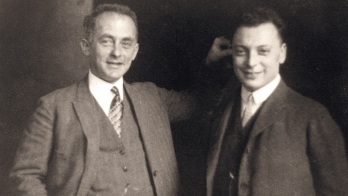By Nancy Forbes and Basil Mahon
Prometheus Books
Hardback: $25.92

The birth of modern physics coincides with the lifespans of Michael Faraday (1791–1867) and James Clerk Maxwell (1831–1879). During these years, electric, magnetic and optical phenomena were unified in a single description by introducing the concept of the field – a word coined by Faraday himself while vividly summarizing an amazing series of observations in his Experimental Researches in Electricity. Faraday – a mathematical illiterate – was the first to intuit that, thanks to the field concept, the foundations of the physical world are imperceptible to our senses. All that we know about these foundations – Maxwell would add – are their mathematical relationships to things that we can feel and touch.
Today, the field concept – both classically and quantum mechanically – is unavoidable, and this recent book by Nancy Forbes and Basil Mahon sheds fresh light on the origins of electromagnetism by scrutinizing the mutual interactions of Victorian scientists living through a period characterized by great social and scientific mobility. Faraday started as a chemist, became an experimental physicist, then later a businessman and even an inspector of lighthouses – an important job at that time. Maxwell began his career as a mathematician, became what we would call today a theoretical physicist, and then founded the Cavendish Laboratory while holding the chair of experimental physics at the University of Cambridge.
The first seven chapters focus on Faraday’s contributions, while the remainder are more directly related to Maxwell and his scientific descendants or, as the authors like to say, the Maxwellians. The reader encounters not only the ideas and original texts of Faraday and Maxwell, but also a series of amazing scientists, such as the chemist Humphry Davy (Faraday’s mentor), as well as an assorted bunch of mathematicians and physicists including David Forbes (Maxwell’s teacher), John Tyndall, Peter Tait, George Airy, William Thomson (Lord Kelvin) and Oliver Heaviside. All of these names are engraved in the memories of students for contributions sometimes not directly related to electromagnetism, and it is therefore interesting to read the opinions of these leading scientists on the newly born field theory.
The historical account might at first seem a little biased, but it is nonetheless undeniable that the field concept took shape essentially between England and Scotland. The first hints for the unification of magnetic and electric phenomena can be traced back to William Gilbert, who in 1600 described electric and magnetic phenomena in a single treatise called De Magnete. More than 200 years later, the Maxwell equations (together with the Hertz experiment) finally laid to rest the theory of “action at a distance” of André-Marie Ampère and Charles-Augustin de Coulomb.
The last speculative paper written by Faraday (and sent to Maxwell for advice) dealt with the gravitational field itself. Maxwell replied that the gravitational lines of force could “weave a web across the sky” and “guide the stars in their courses”. General relativity was on the doorstep.








